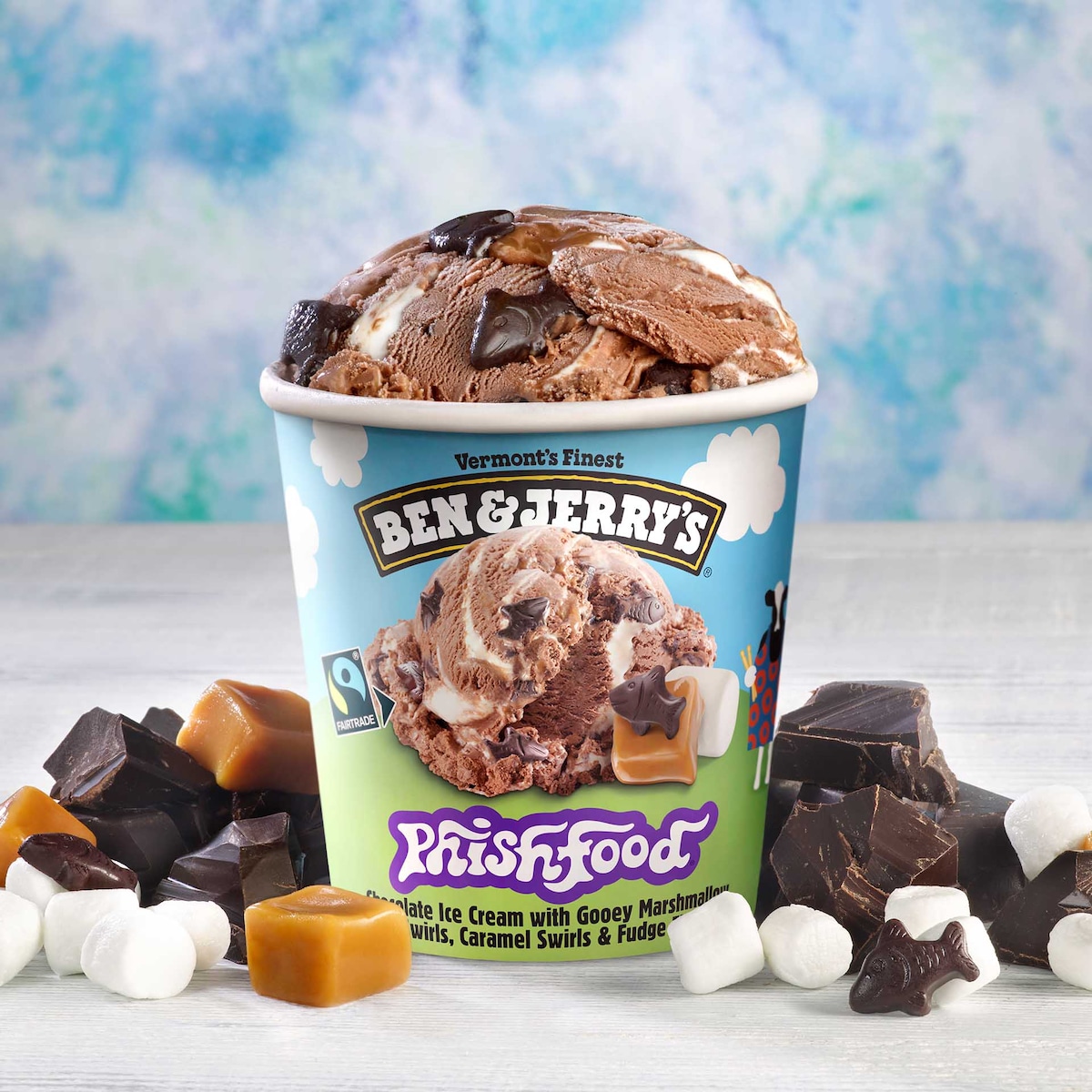
Our Sustainable Packaging Journey
Ben & Jerry’s has always believed that ice cream can change the world. And while it’s true that ice cream puts smiles on people’s faces and brings people together, we can’t ignore the impact that our packaging has on the environment. As with most food product packaging, much of ours is not reused, composted, or recycled, but rather disposed of as waste. We’re on a journey to change that.
Our goal is to have 100% of our packaging be free of petroleum-based plastic. And we want it all to be reusable, compostable, or recyclable by 2025!
We’ve been working to reduce our overall impact on the environment for many years, and we know we have more to do. The biggest issue we face is the petroleum-based plastic in some of our current packaging, which is difficult if not impossible to recycle.
Plastic production and pollution are inextricably linked to three things we care deeply about: environmental health, social justice, and climate change.
Being Part of the Solution
Because of the inherent unsustainability of plastics, we are committed to being part of the solution by not creating plastic waste in the first place. That’s why Ben & Jerry’s has embarked on a multiyear effort to eliminate plastics from our consumer packaging by:
- Reducing the amount of single-use petroleum-based plastic packaging we use throughout the supply chain and our Scoop Shops globally
- Finding plant-based and/or compostable alternatives to conventional petroleum-based plastic
- Developing reusable packaging options
- We have partnered with Canopy’s Pack4Good Initiative to ensure our sourcing of product packaging does not come from wood pulp from Ancient and Endangered Forests across our supply chain. We’ve already begun this responsible journey as we’ve been using FSC-certified fiber in our pints since 2009, but we want to further improve in this space. We’ve initiated work with Canopy and their Pack4Good initiative as they recognize the critical value of forests to biodiversity, climate, and traditional communities.
There’s no silver bullet for the global plastic problem, but we’ve made good progress. Here are the changes we’ve made so far.
Reducing Petroleum-Based Plastic
- As of early 2019, we stopped offering plastic straws and spoons in our 600+ Scoop Shops worldwide, avoiding an estimated 80,000 pounds of plastic every year.
- We made our European paperboard ice cream containers more sustainable using a one-sided plant-based polyethylene coating. Although it is chemically identical to the petroleum-based plastic in our old coating, this change will reduce the amount of plastic we use by approximately 88,000 pounds per year and move our sourcing away from petroleum. And it means that ice cream containers in Europe are more widely recyclable.
- In 2021, we transitioned to a paper wrapper on our Peace Pops, avoiding 18 tons of plastic per year.
- In 2021, our US-based Scoop Shops transitioned from our former ice cream cups, drink cups, and lids to plant-based and industrial compostable packaging. We’re still working on solutions for Scoop Shops worldwide. (Pro tip: Waffle cones are a delicious and plastic-free serving option!)
- By late 2022, we’ll complete removing the outer layer of plastic in our US containers as well, which will reduce plastic by an additional 47 tons of plastic per year. Sadly, most US communities still do not collect coated paperboard food packaging for recycling.
- By the end of 2022, we will have transitioned all our EU bulk tubs to be 100% post-consumer recycled material, saving 62 tons of virgin plastic per year.
- Also by the end of 2022, we will have transitioned our Cookie Dough Chunks pouches to paper in the US, avoiding 54 tons of plastice use per year.
While we’re talking about packaging, we’re happy to tell you our pints have used paperboard packaging with Forest Stewardship Council (FSC) Certification since 2009. FSC certification means the pulp in the paperboard comes from forests that are managed for the protection of wildlife habitat, maintenance of biodiversity, and other forest sustainability criteria.
What's Next?
Our biggest priority is finding an alternative to the remaining plastic in our ice cream containers, including the protective tamperband around the lid. Finding a solution that is recyclable and/or compostable throws up a number of challenges. Recycling standards and regulations vary widely between countries and even between towns. Composting isn’t an ideal solution yet either, because it’s not widely available. Still, we know using packaging material that biodegrades more quickly than traditional plastics is better for the planet if it isn’t properly disposed of.
We’re working to find solutions and break down these and other barriers surrounding the global waste system. We’ll continue pushing across all our euphoric offerings to make sure that the only thing our ice cream leaves behind is a smile.
Thank you to everyone who’s weighed in with suggestions and supported our efforts in this transition. We’ll provide more updates along the way.